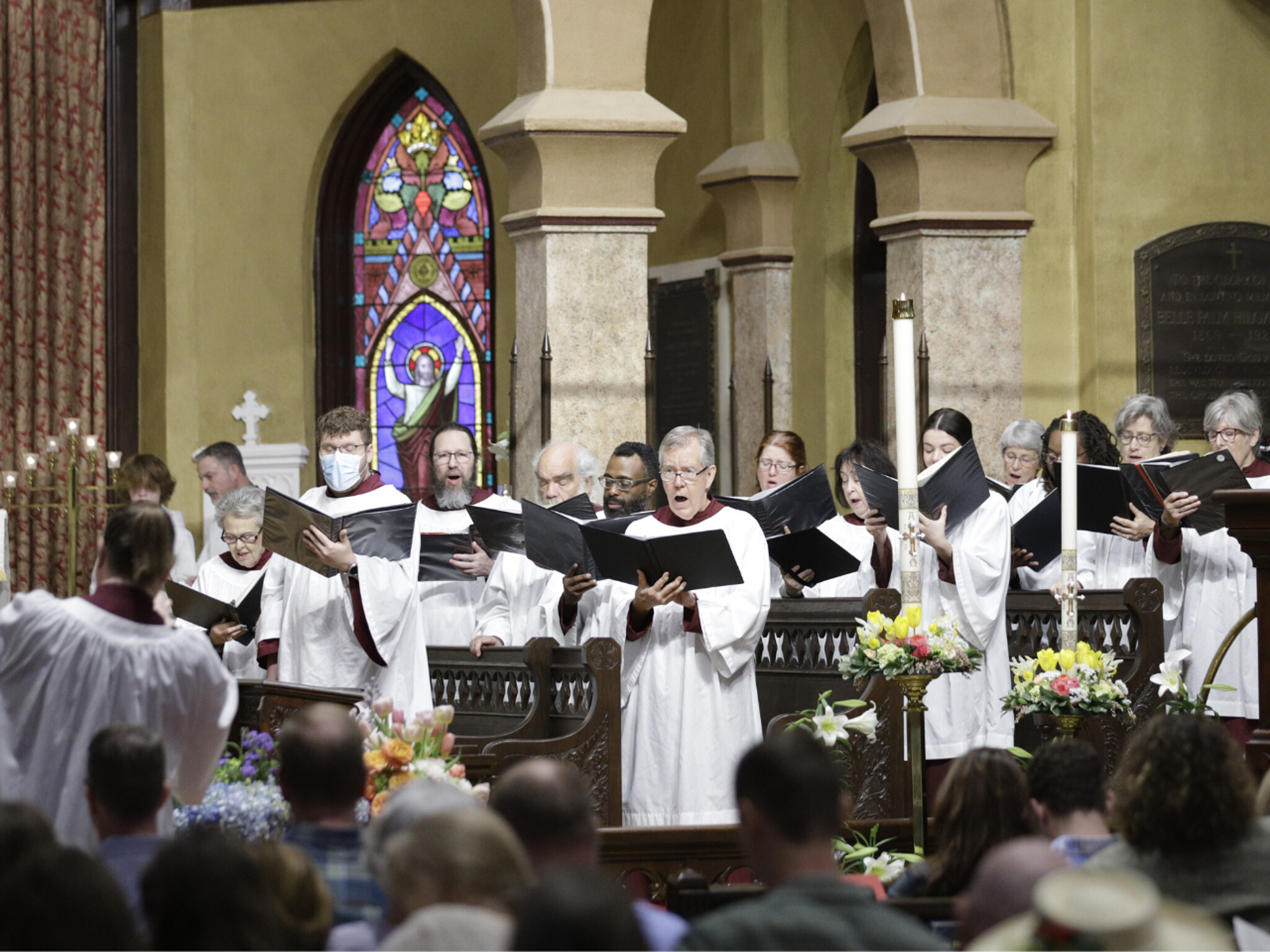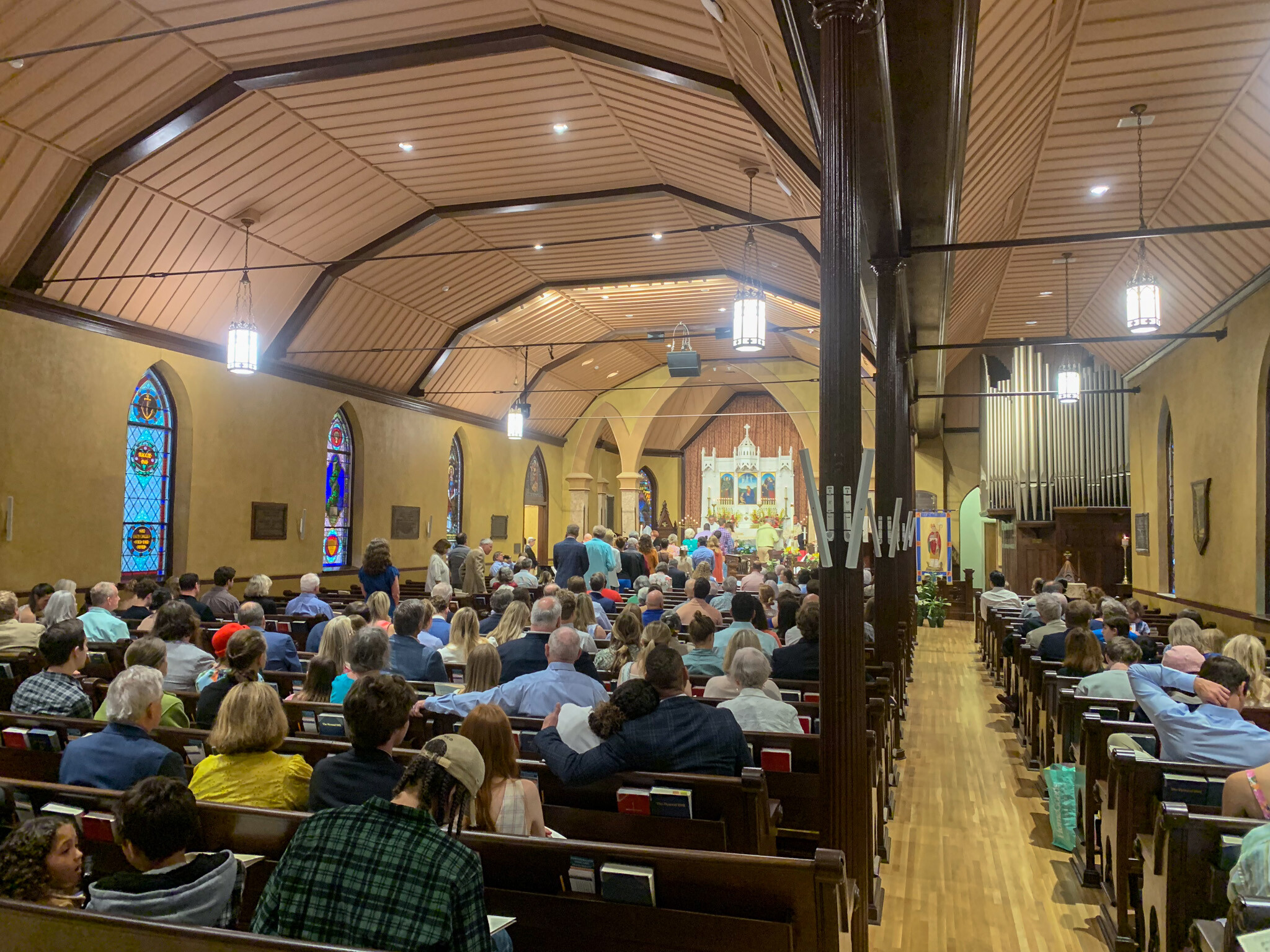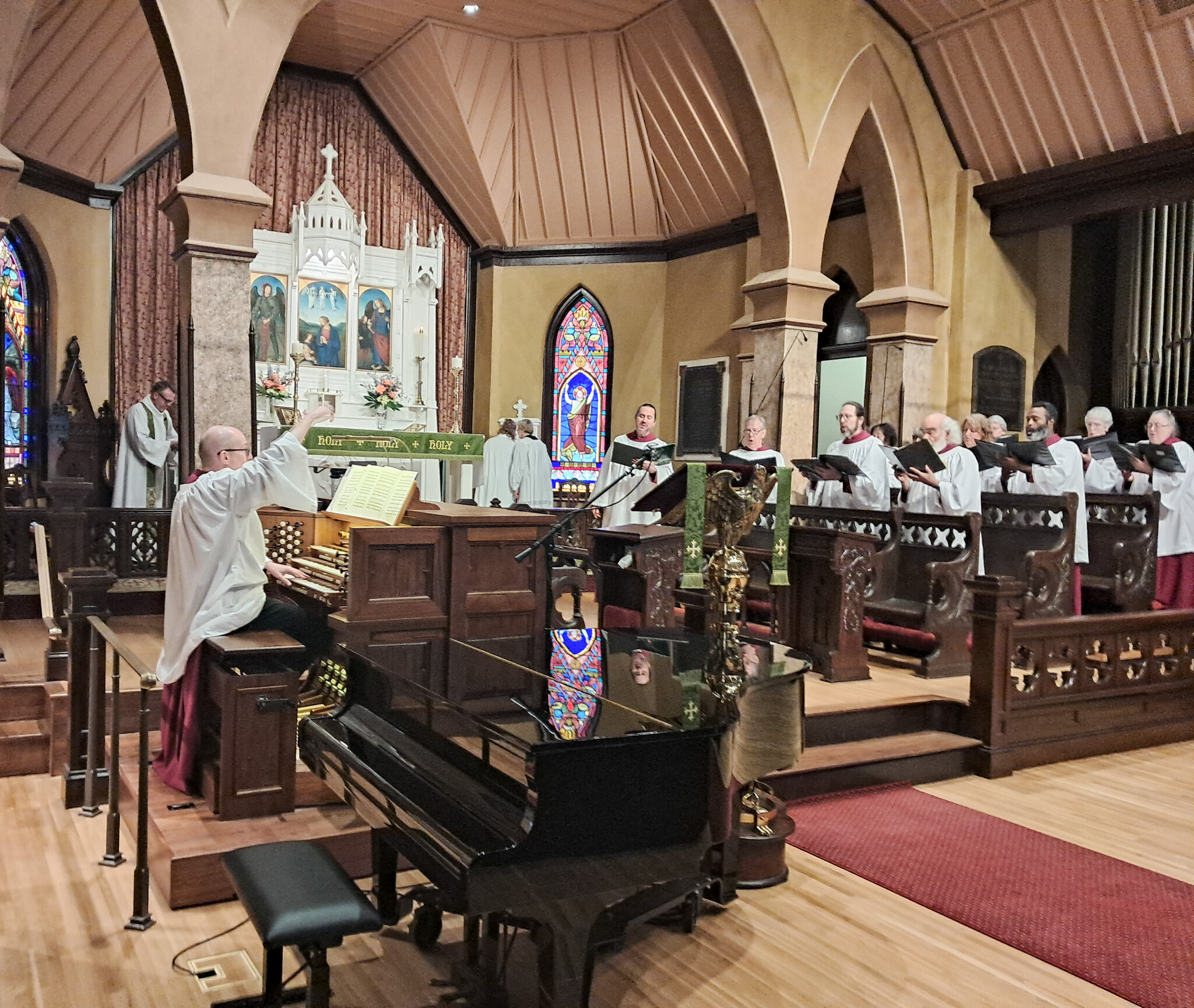
Ascension Day 2025 Celebration
Thursday, May 29
4:30 p.m. Labyrinth Party
5:30 p.m. Dinner
7 p.m. Feast of the Ascension Holy Eucharist in Bethell Hall
Come downtown and spend the evening at St. David's observing the Feast of the Ascension together, on the last day of school, with a sky-themed party, special meal, and worship.
Child care available 4-8 p.m.
The days from Ascension Day to Pentecost form their own short season within the larger season of Easter.
On Ascension Day, the Church reads the accounts of Christ’s ascension from Luke’s Gospel and the Acts of the Apostles. The angels’ message to the dumbfounded disciples – ‘Men of Galilee, why do you stand looking up toward heaven? This Jesus, who has been taken up from you into heaven, will come in the same way as you saw him go into heaven’ – forms the text of the Introit for the feast. And what is this way? Luke tells us that Christ was carried up into heaven while he was blessing them.
These accounts put into vivid, physical terms a reality that is affirmed and explored in, among other places, the Epistle to the Ephesians, a passage from which is read on Ascension Day: ‘God put this power to work in Christ when he raised him from the dead and seated him at his right hand in the heavenly places, far above all rule and authority and power and dominion, and above every name that is named, not only in this age but also in the age to come.’
The Ascension marks the completion – for now – of Christ’s work on earth. Thus, we give thanks for the Word’s sojourn among us and celebrate the Son’s return to his rightful place to reign at the right hand of the Father: ‘kingship’ Psalms figure prominently in the liturgies of the season. Christ enters heaven as a triumphant hero, having freed us from sin and death.
But that is not all: Christ has not only ascended to the Father, but has done so precisely as a human. Not only was flesh deemed worthy for the Word to put on at his Incarnation; it was deemed worthy not to be cast off upon the Son’s return to heaven, but rather to be taken to the very Throne of God, as our entrance hymn on Sunday, Caroline Maria Noel’s fine ‘At the Name of Jesus’ [435], says: ‘...bore [the Name referred to in the aforementioned Epistle] it up triumphant, with its human light, through all ranks of creatures, to the central height, to the throne of Godhead, to the Father’s breast...’.
Indeed the Communion anthem on Ascension Day, ‘O Lord Most High, eternal King’ [Hymn 220, whose plainsong tune is also heard in an organ prelude by 19th–20th-century Alsatian composer Marie Josef Erb], not only celebrates Christ as a victorious king but notes that even the angels wondered at ‘how changed is our humanity’ as seen in the glorified and ascended Christ. This likely echoes St Gregory of Nyssa’s application of Psalm 24 to the ascended Christ: ‘Who is this King of glory?’ he suggests the angels asked, not recognizing the Son in his glorified, yet somehow still creaturely, form.
Christ as ‘King of glory’ appears in the Offertory anthem, Renaissance composer Luca Marenzio’s setting of the Magnificat antiphon for the feast, ‘O Rex gloriae’. This text forms the basis of the Prayer Book Collect for the Sunday after Ascension Day (though in the Collect the Father, not the Son, is called ‘King of glory’, in order to cast him as the agent of the Son’s exaltation):
O God, the King of glory, you have exalted your only Son Jesus Christ with great triumph to your kingdom in heaven: Do not leave us comfortless, but send us your Holy Spirit to strengthen us, and exalt us to that place where our Savior Christ has gone before...
This Collect refers to other Scriptures as well, particularly the Farewell Discourse of John’s Gospel from which we read in later Eastertide. Sunday’s Communion anthem is a setting by mid-20th-century American composer Everett Titcomb of verses from that passage, John 14.18 and 16.22: ‘I will not leave you comfortless...’. The anthem cleverly quotes the melody of the great Pentecost hymn ‘Veni creator Spiritus’ [502] underneath garlands of Alleluias. And during Ascensiontide the Church indeed prepares herself for the outpouring of the Spirit.
Finally, this Collect, this season, and Christ’s ascension itself remind us of the hope that we will follow where Our Lord has led. Christopher Wordsworth’s hymn ‘See the Conqueror mounts in triumph’ [215], alluding to other parts of the Epistle to the Ephesians among other passages, puts it plainly:
Thou hast raised our human nature
on the clouds to God’s right hand:
there we sit in heavenly places,
there with thee in glory stand.
Jesus reigns, adored by angels;
Man with God is on the throne;
mighty Lord, in thine ascension,
we by faith behold our own.





Login To Leave Comment